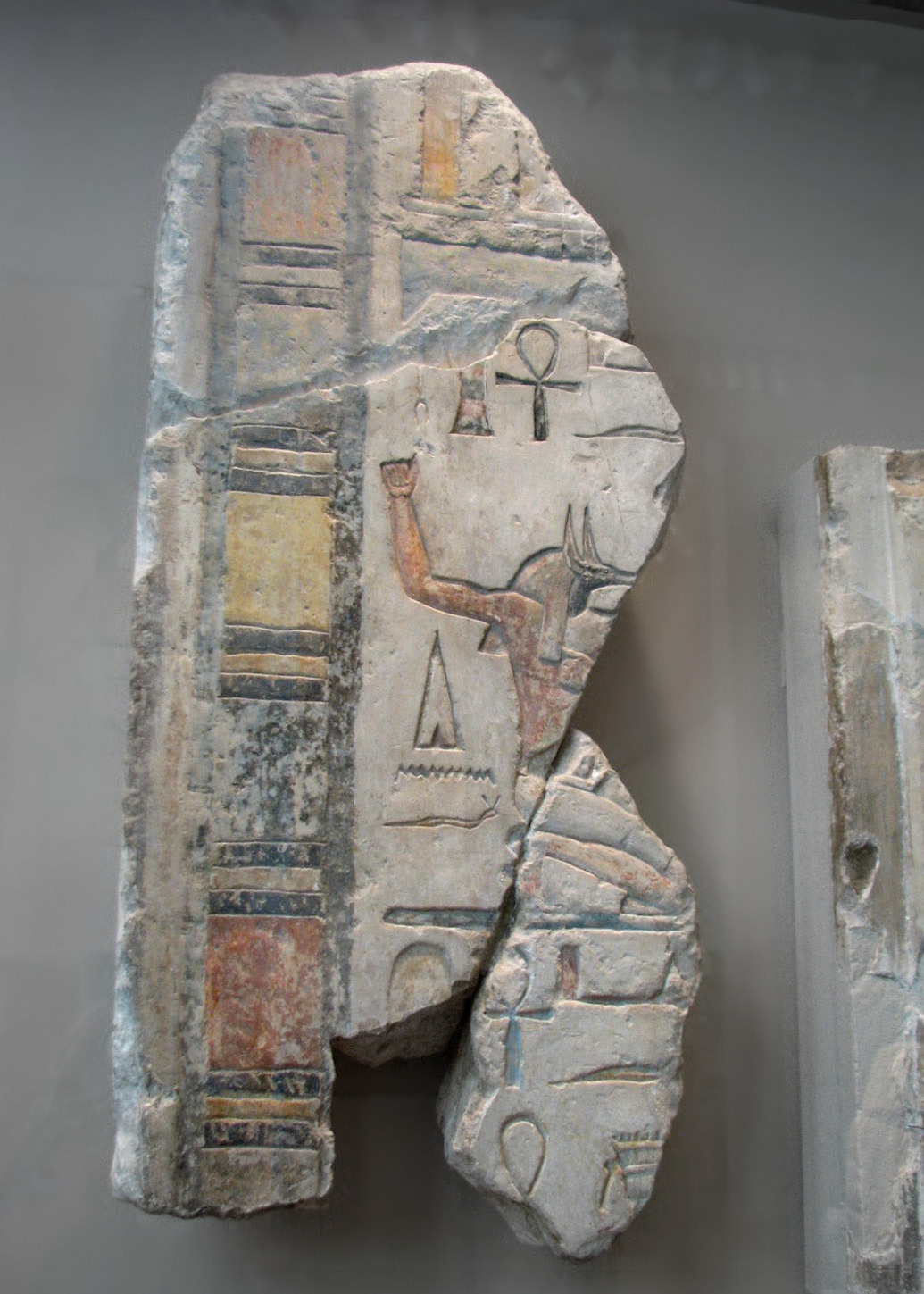
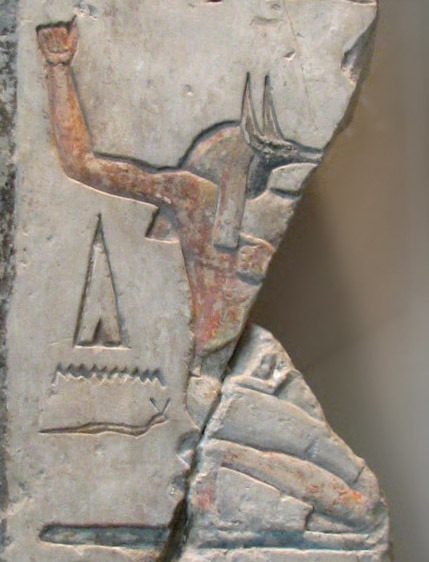
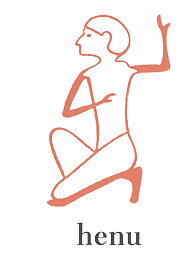
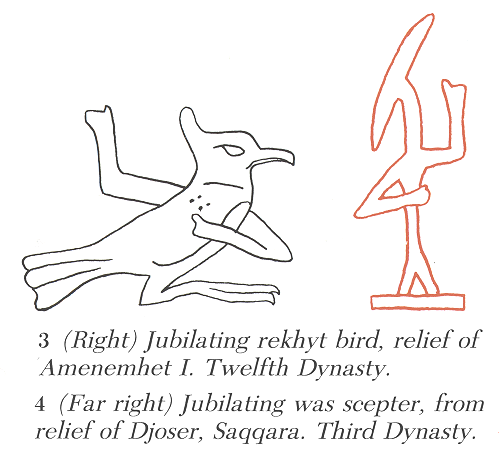
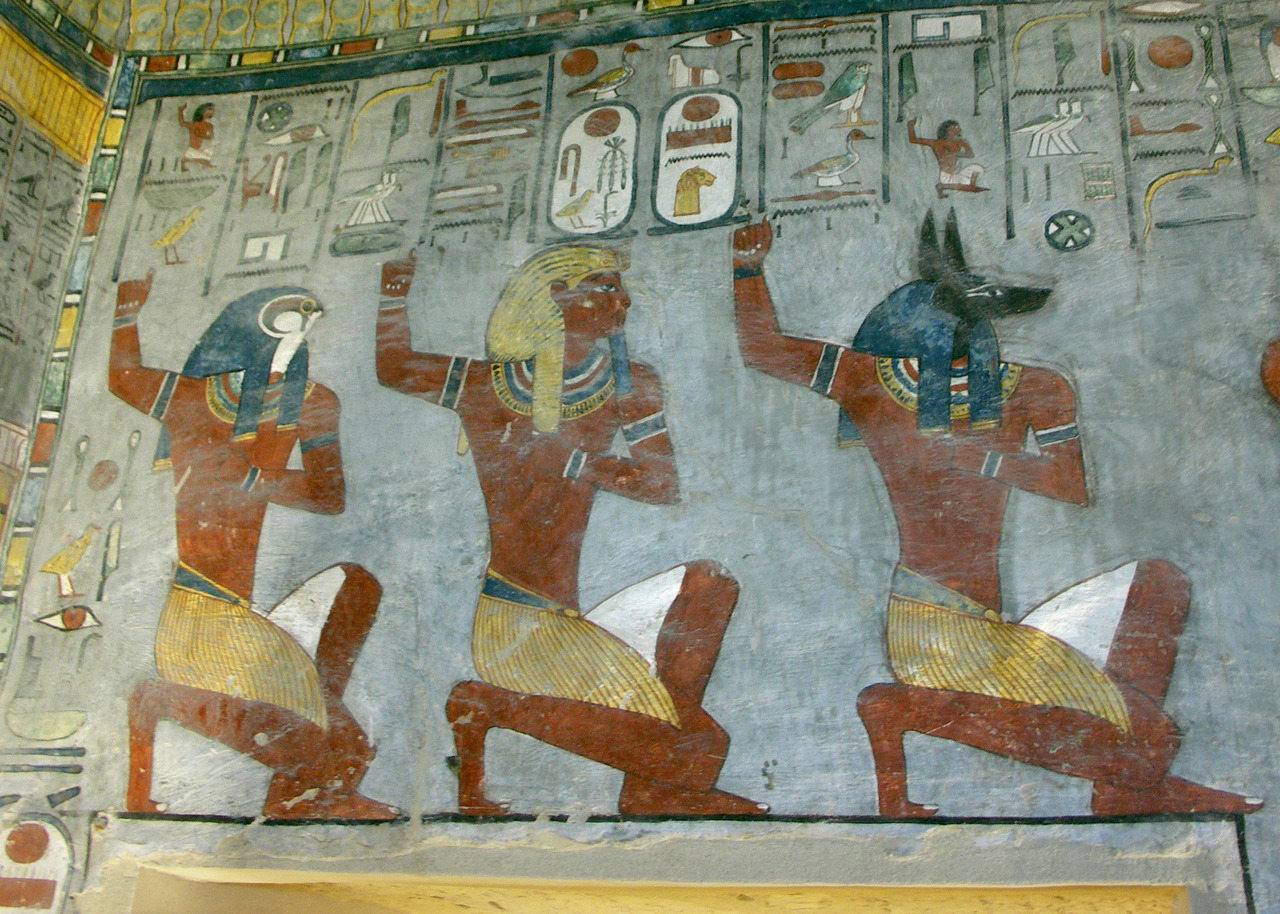
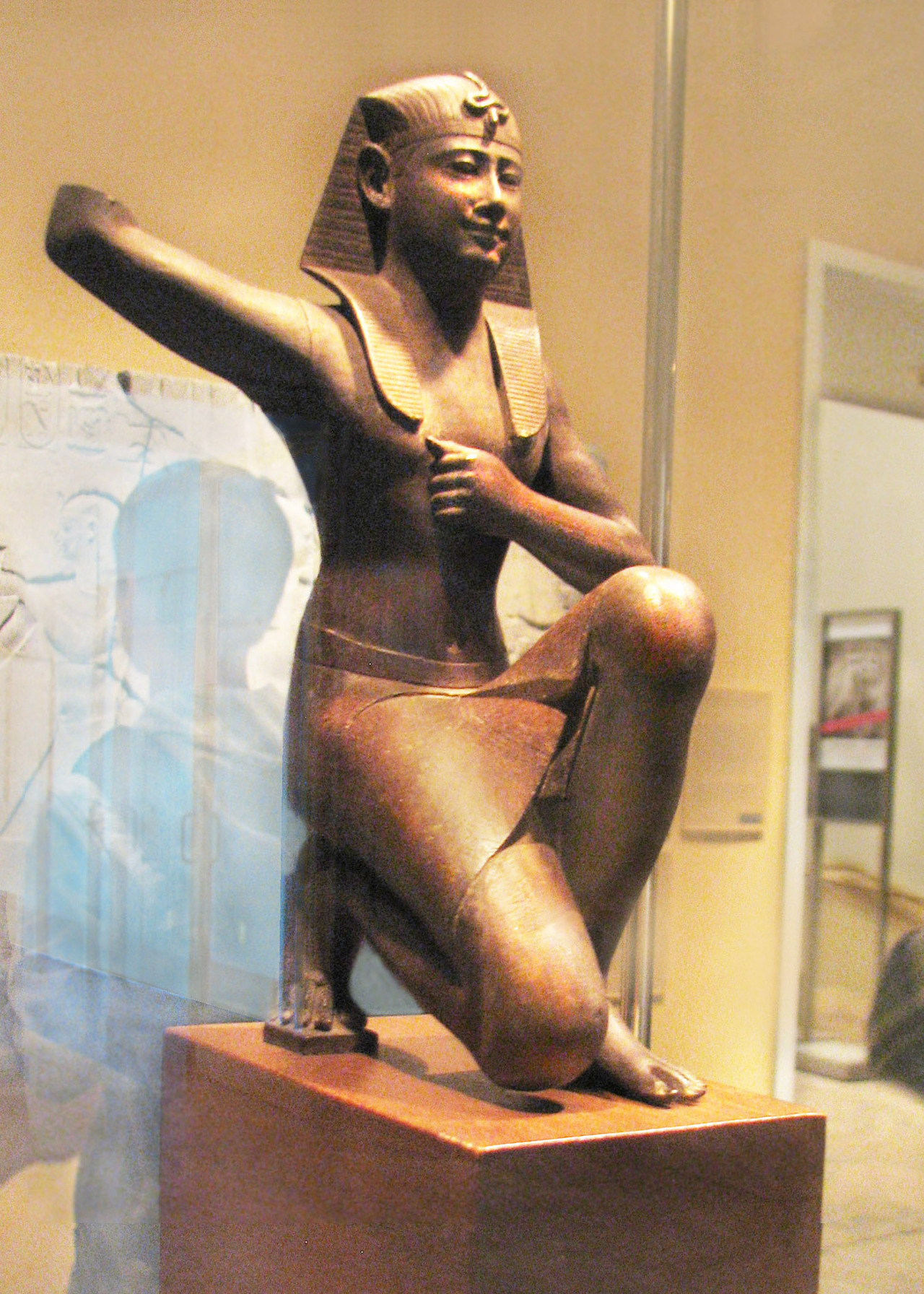
Soul of Nekhen
Dynasty 12, reign of Senwosret I (ca. 1961-1917 BCE)
Painted limestone, from the pyramid temple of Senwosret I, Lisht
Rogers Fund, 1909 (09.180.41)
(From info card)
“This kneeling, jackal-headed deity represents one of the souls of Nekhen (Hierakonpolis), an important cult center in southern Egypt. Their counterparts were the falcon-headed souls of Pe and Dep (the double mounds of Buto), which was located in the northern part of the Egyptian Delta.”
“These divine creatures, whose roots seem to lie at the beginning of Egyptian history, served as protective powers representing the northern and southern boundaries of the country. The figure’s kneeling pose and the placement of his arms are part of a ritual performance that accompanied the epiphany of Egyptian deities. In a pyramid temple it was doubtless the rejuvenated king who was addressed by this gesture of jubilation.”
The jubilation pose is called ‘henu’ - 3rd image
Ramesses I between a Soul of Pe (Buto) and a Soul of Nekhen - 4th image
There’s a scene similar to the Met’s fragment in Ramesses I’s tomb. “In this scene, which celebrates the rejuvenation of the king’s ba (*G53) or soul, the written henu hieroglyph is visible in the inscription above the figure next to the king and is clearly mirrored in the larger figures of the representation. The figures are, in fact, simply hieroglyphs made large. In a similar representation from the Eighteenth Dynasty temple at Buhen in Nubia, the falcon-headed gods of Pe are accompanied by an inscription which states 'May they give all life and power…(and) all stability which they have…,’ showing that the gesturing figures could sometimes be symbolic of divine gifts.” (Wilkinson, Reading Egyptian Art, page 17)
The Metropolitan has a superb late dynasty example of this pose - Ritual Royal Figure in Henu pose, 30th Dynasty - 5th image
